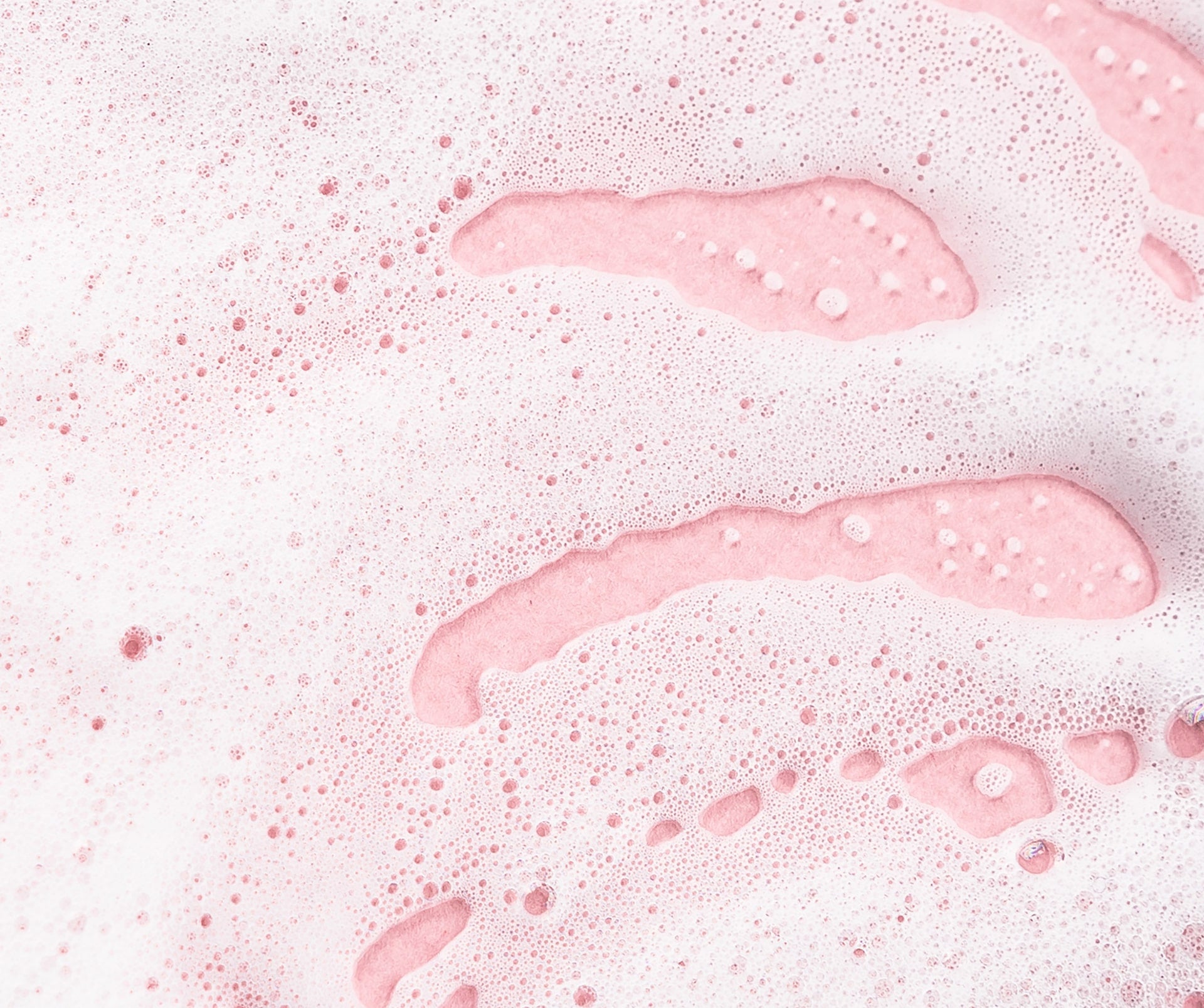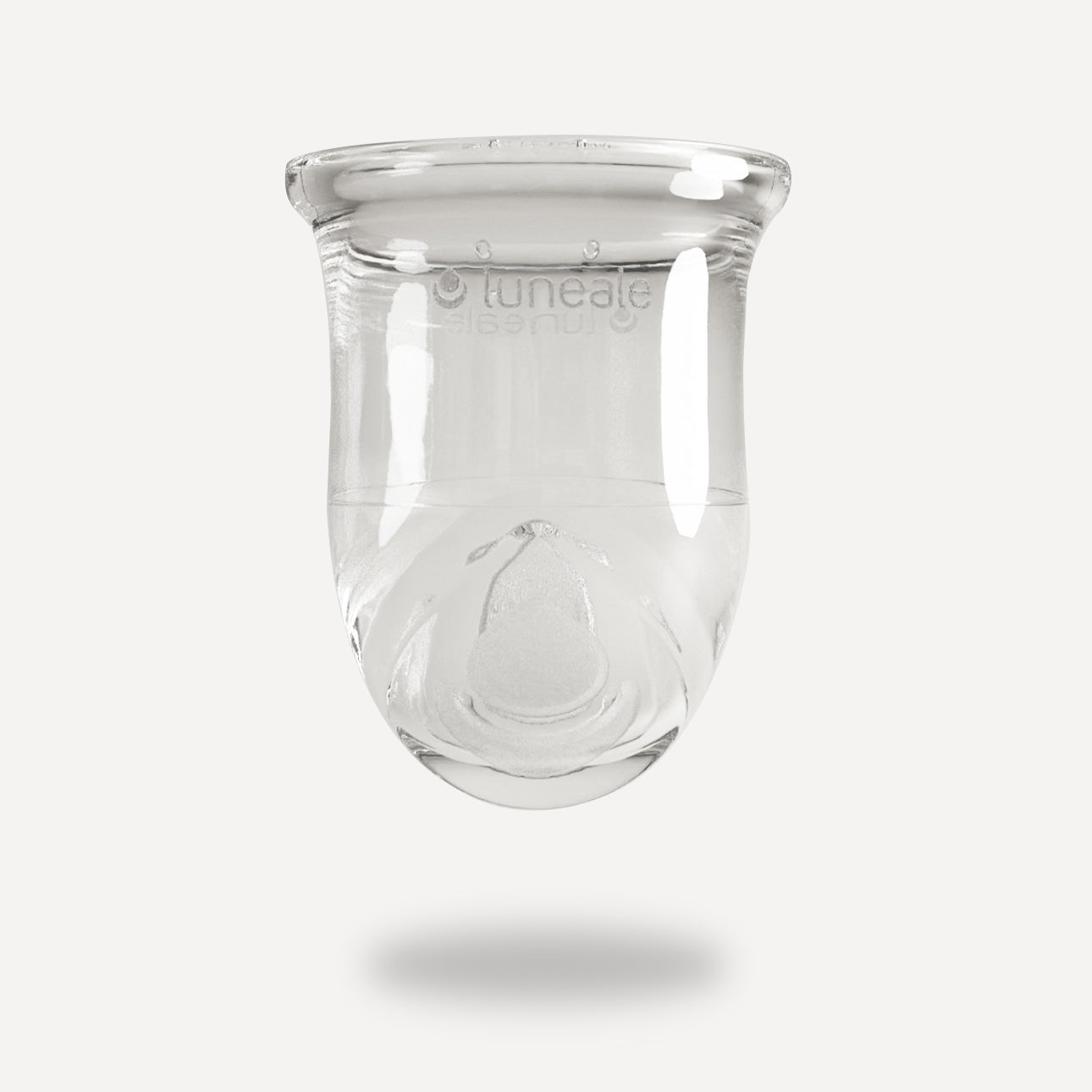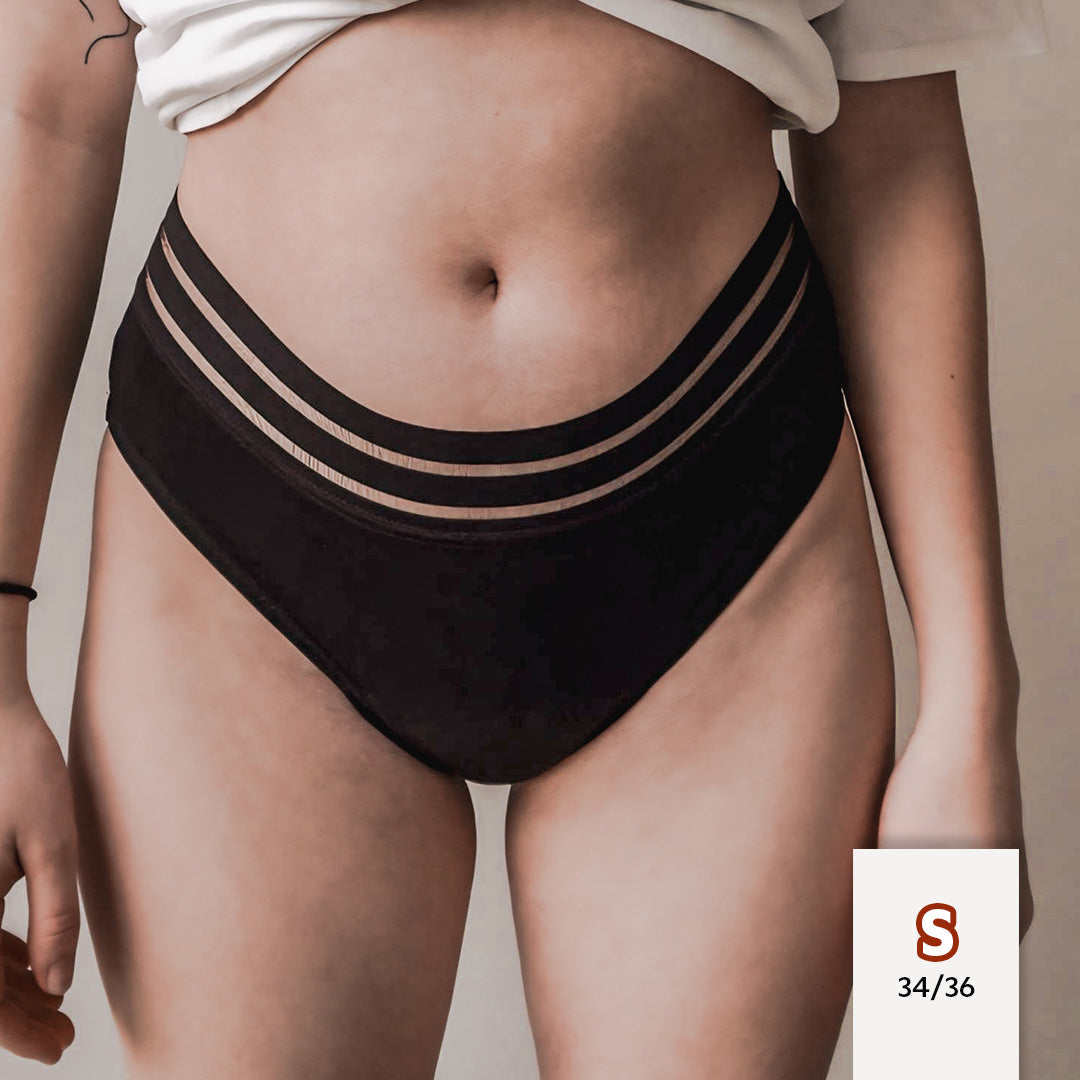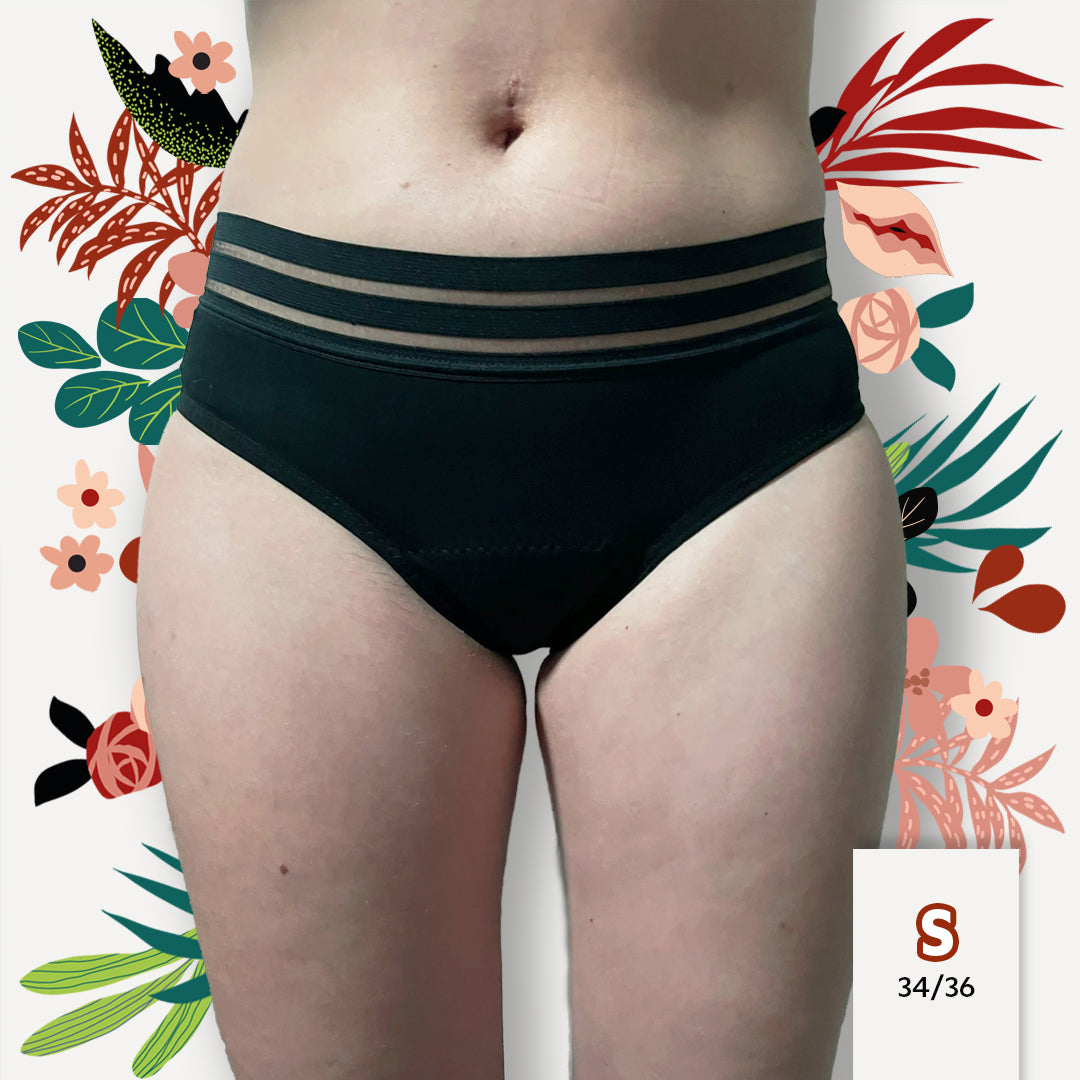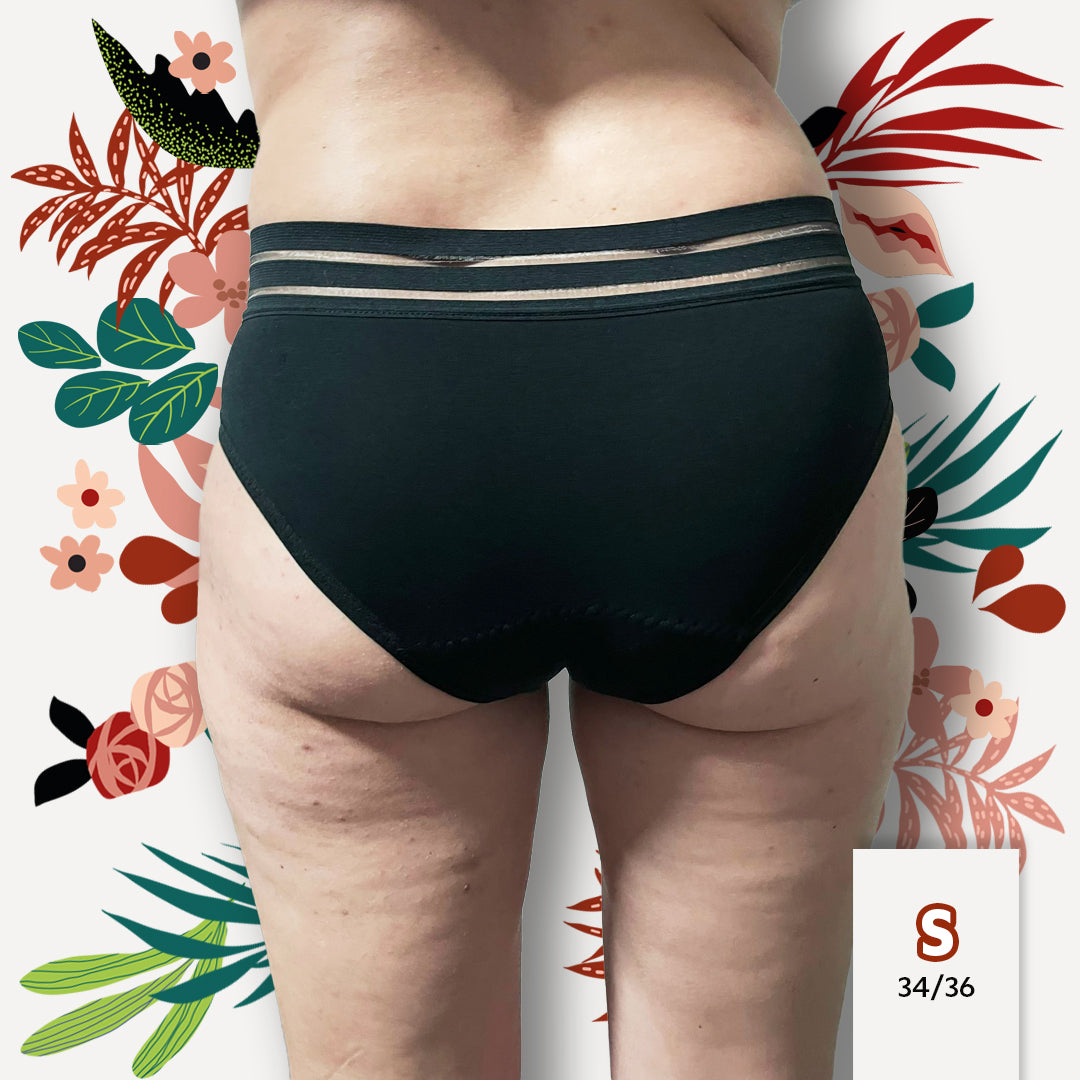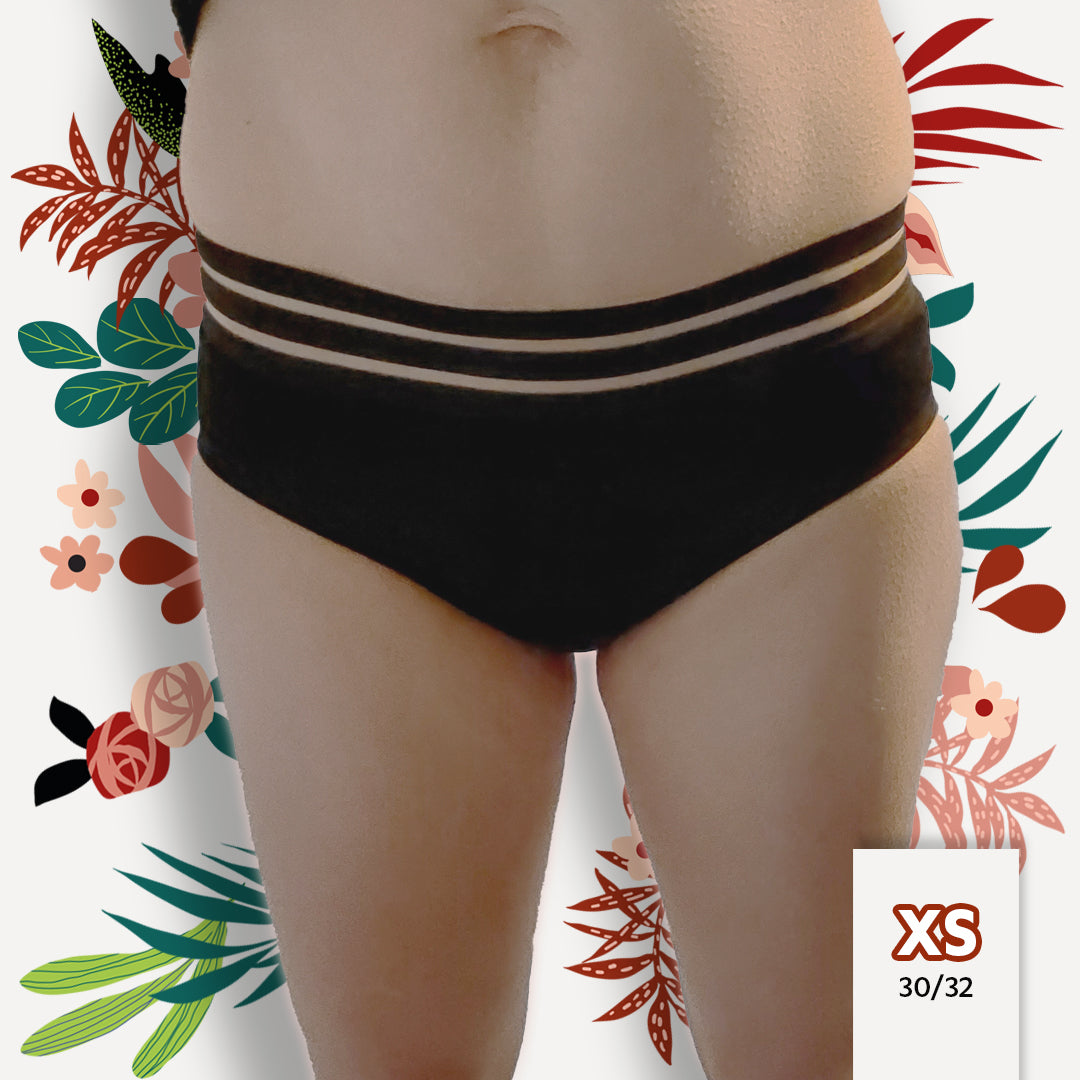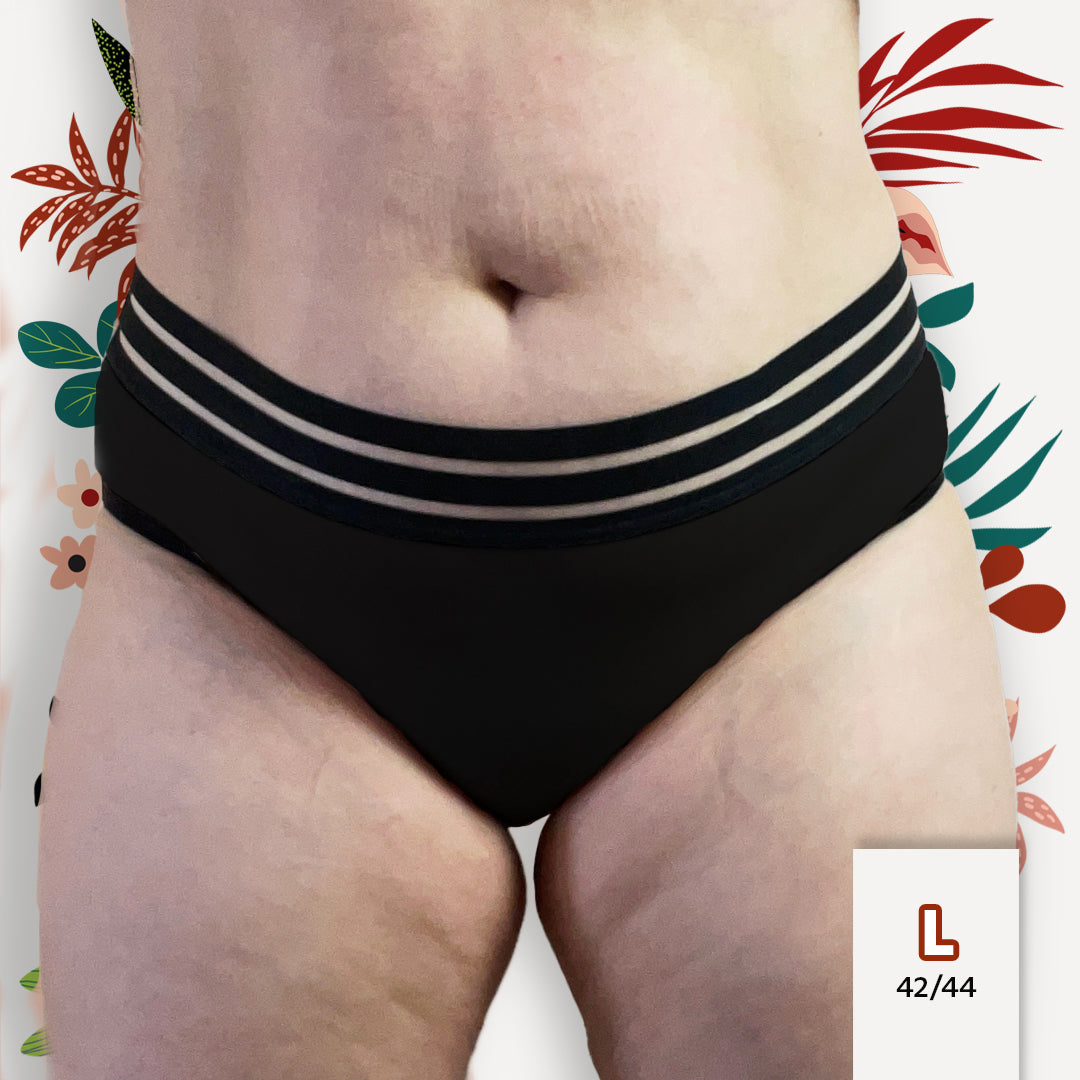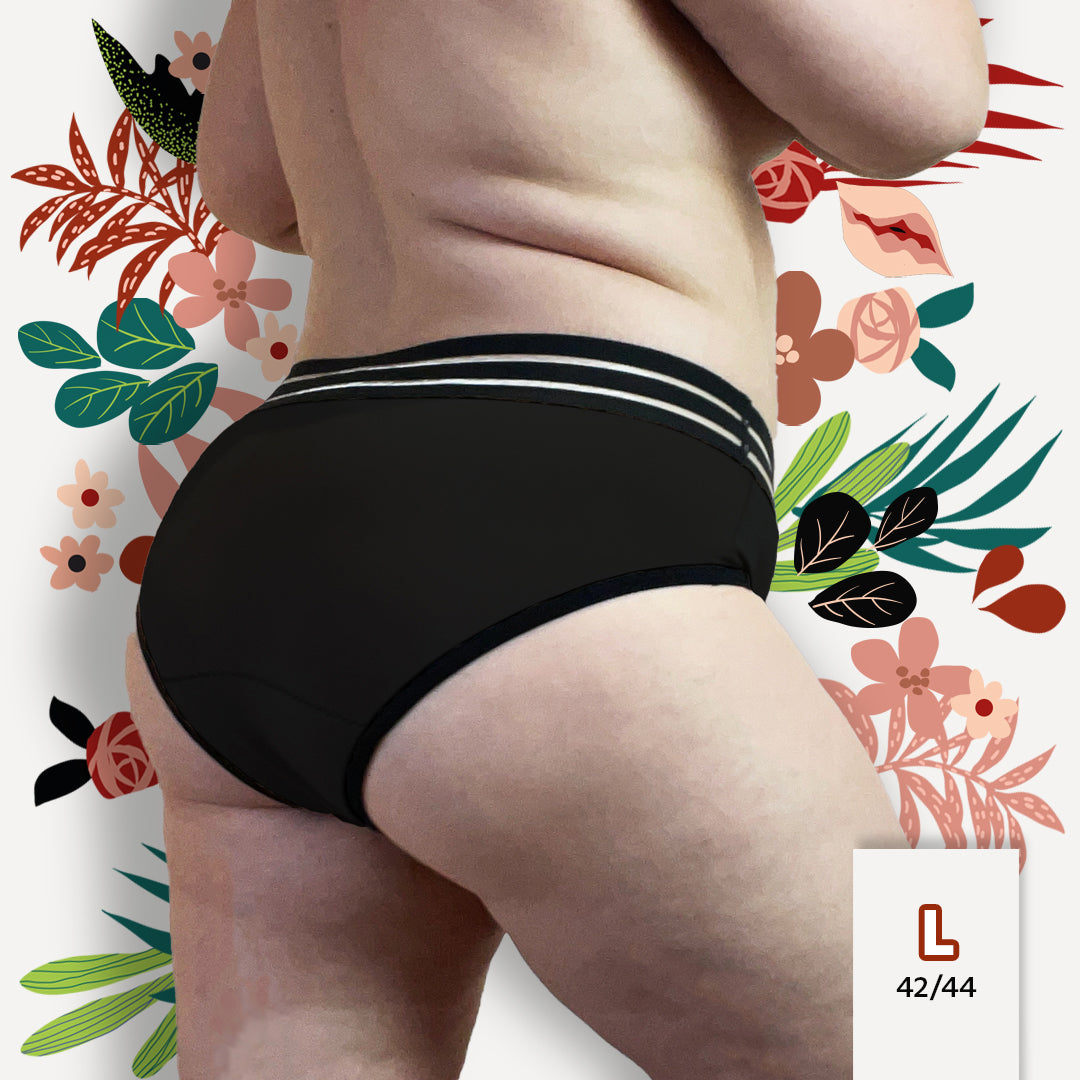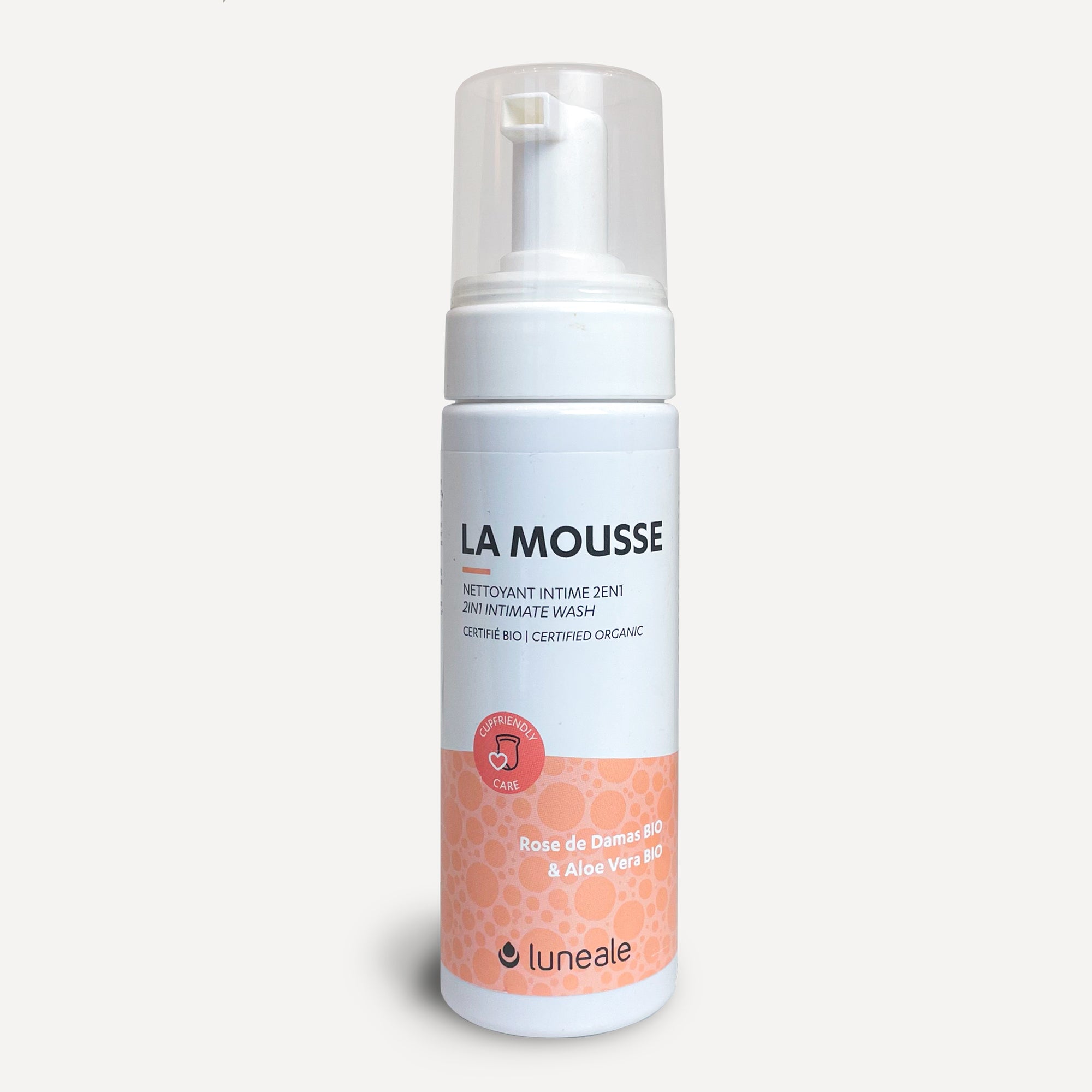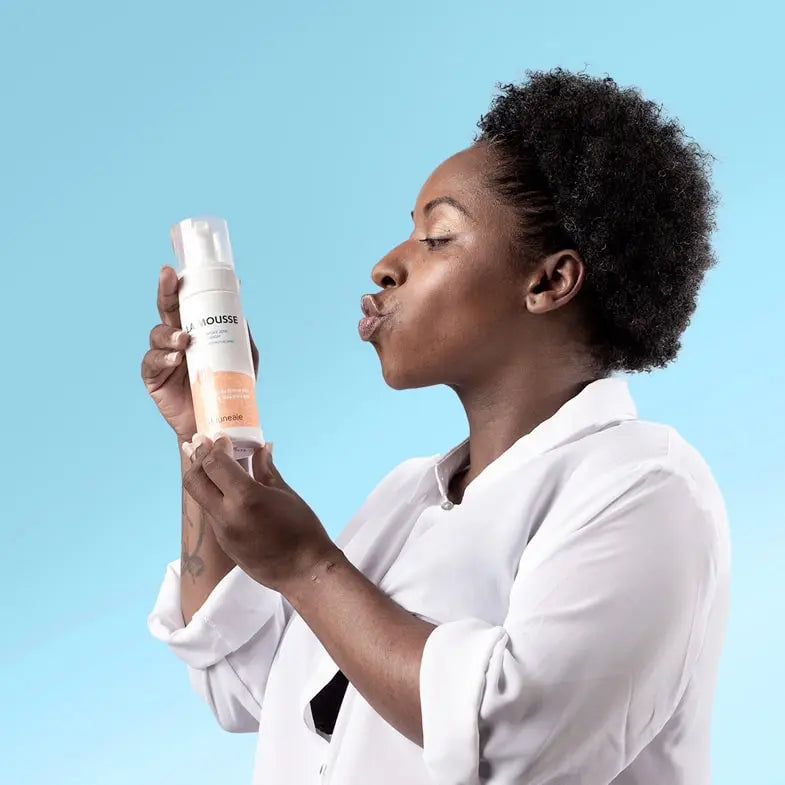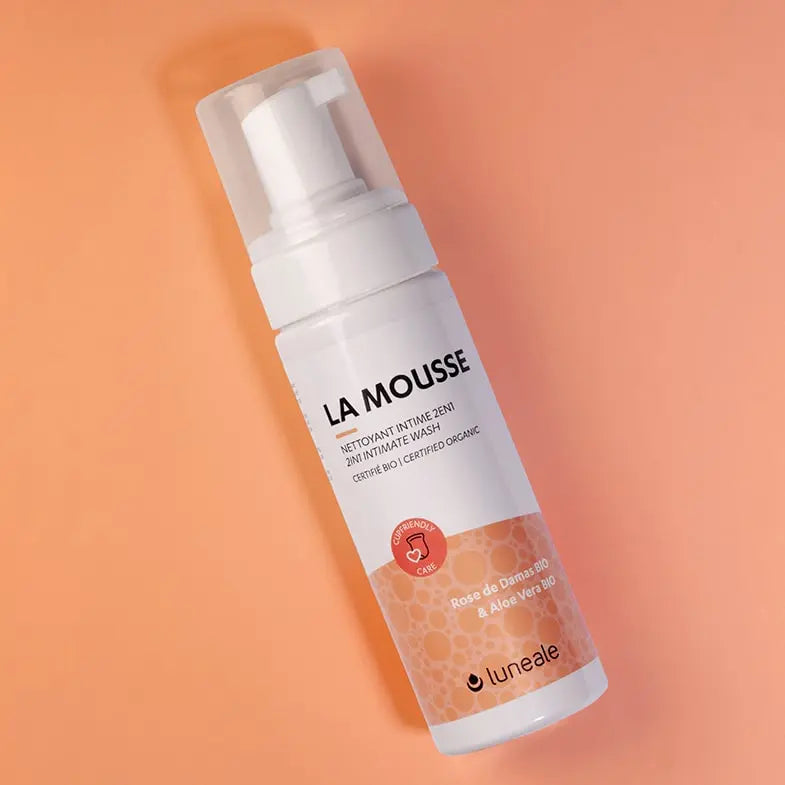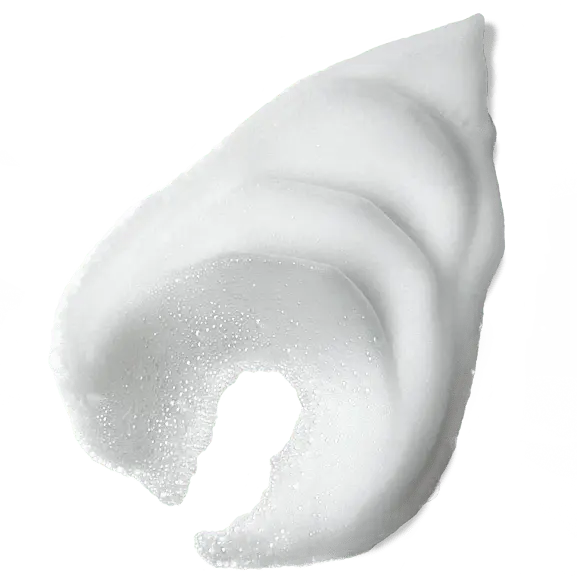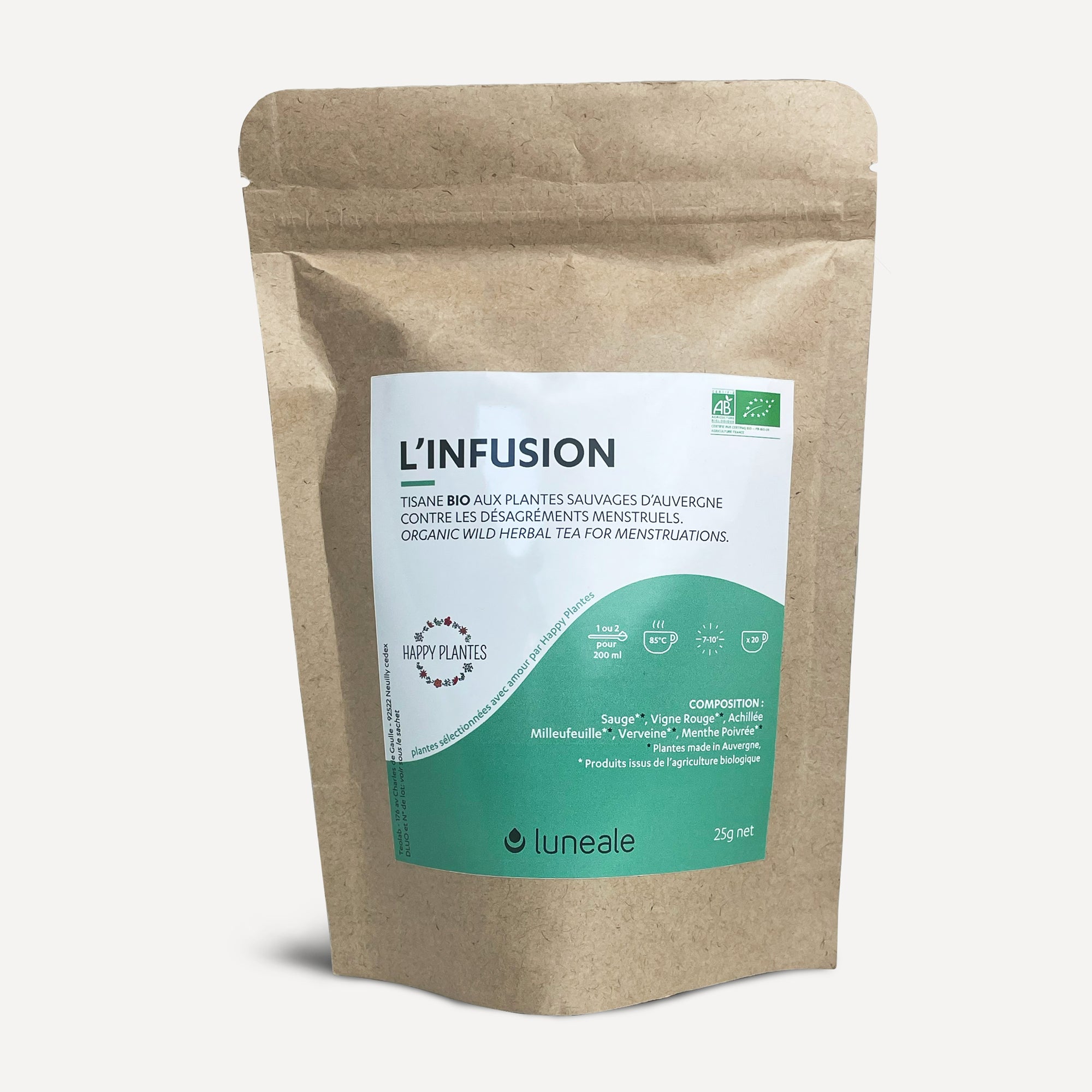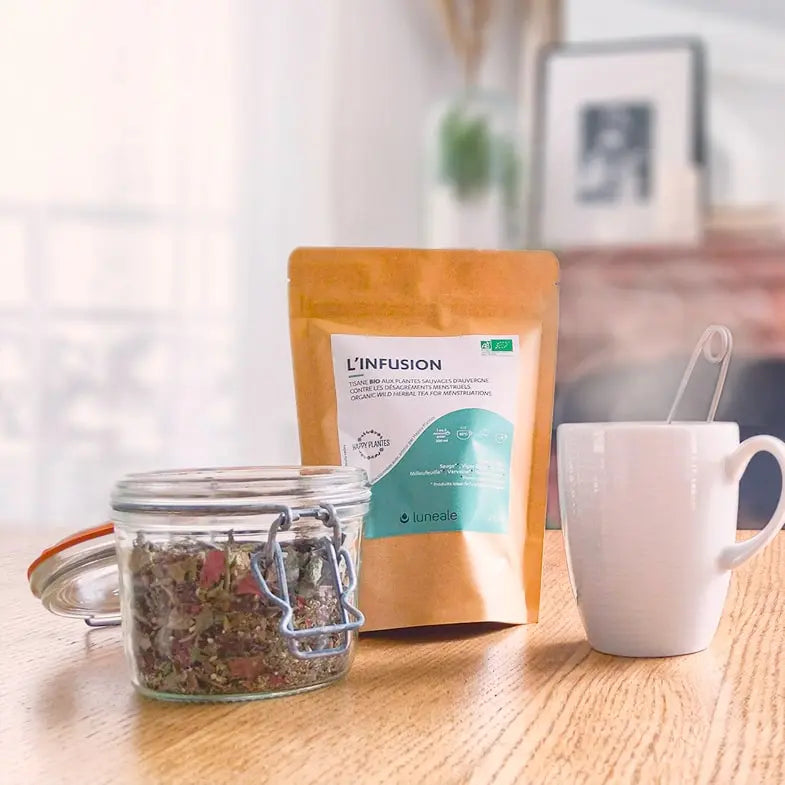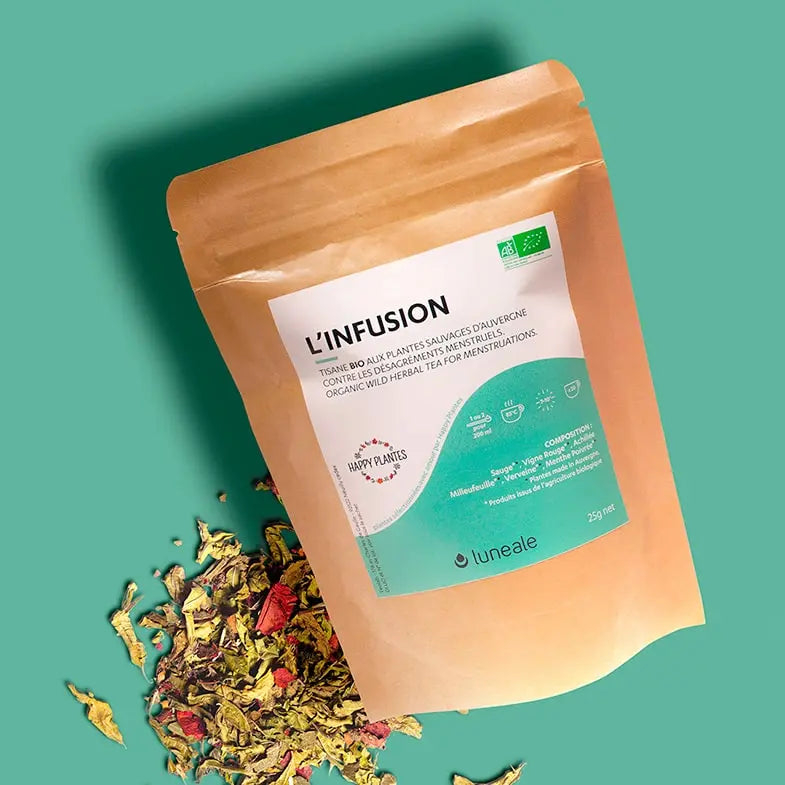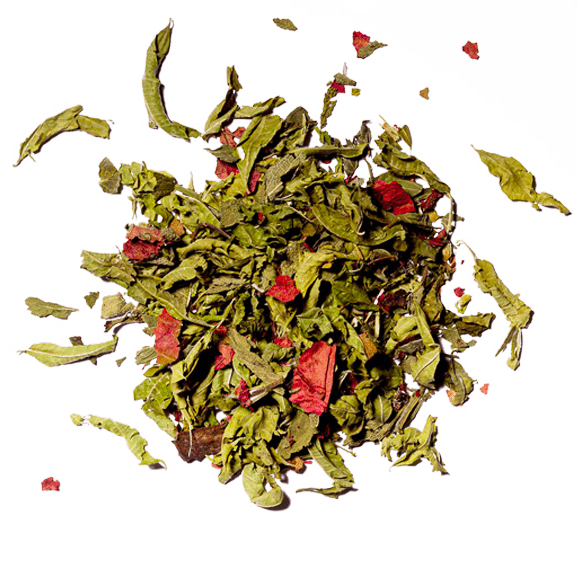Le nettoyage des coupes menstruelles pendant vos règles est un aspect à ne pas négliger. Pendant les périodes d'utilisation, il est conseillé de la rincer simplement à l’eau potable, mais certaines personnes sont tentées de laver leur cup menstruelle avec du savon, un nettoyant intime ou un gel douche.
Rappelons qu'en matière d'utilisation, il n'est pas nécessaire de stériliser votre coupe menstruelle à chaque fois que vous la videz : le vagin n'est pas un milieu stérile, et il suffit simplement que votre cup soit propre. Et pour cela, avec une cup sans trop d'aspérités, l'eau suffit en général. Oui, simplement de l'eau !
Mais si vous décidez pendant vos règles d'utiliser un nettoyant pour votre cup, il est primordial de le choisir avec soin : il faut qu'il respecte autant le matériau de votre cup menstruelle (en général en silicone ou en TPE) que votre vulve et votre vagin. Et pour ça, il faut prendre en compte 2 éléments essentiels : le PH et la composition.
Choisissez un nettoyant au pH adapté.
Qu'est ce que le pH ?
Le pH mesure l’acidité d’un milieu ou l’alcalinité d’un milieu. Ce qu’on appelle pH physiologique d’une zone, c’est son pH normal.
La valeur de ce pH physiologique est différente sur le visage, les mains, la vulve, le vagin… et cette valeur est souvent une fourchette.
Pour maintenir le pH de chaque zone à sa valeur optimale, il faut un produit adapté :
- Pour la peau, le pH physiologique est situé entre 4 et 7
- Pour les muqueuses intimes externes (vulve) : entre 5 et 8
- Pour les muqueuses intimes internes (vagin) : entre 4 et 4,5 (se rapproche de 6 pendant les règles)
Le pH vulvo-vaginal est donc acide. Souvent, les produits d’hygiène intime sont notés avec la mention « pH physiologique » sans plus de précision. Mais utiliser un produit fait pour la toilette de la muqueuse externe (avec un pH neutre de 7 ou 8) pour nettoyer ta cup (qui va finir sur ta muqueuse interne, acide), n’est pas forcément adapté, car ce n’est pas le même usage.
Pourquoi le pH est important pour votre santé intime ?
Le pH vulvo-vaginal est naturellement acide car la majorité des micro-organismes nuisibles ne survit pas à un pH bas: ce pH protège.
Evidemment, certains de ces organismes se sont adaptés.
Voici les responsables des infections vulvo-vaginales les plus répandues et les milieux qu’ils affectionnent :
- Les Candida, surtout le Candida albicans, sont des champignons responsables de la plupart des mycoses vaginales. Ils aiment les pH très acides, inférieurs à 4.
- Les Gardnerella, bactéries responsables de la vulvite et de la vaginite, aiment les pH autour de 5.
- Les Trichomonas, des parasites qui provoquent des infections vaginales, aiment les pH autour de 6.
Le tableau ne serait pas complet sans aborder les « bonnes bactéries », dont le rôle est de protéger le vagin des mauvaises bactéries : en priorité, les Lactobacilles. Il est primordial de choyer ces gendarmes du vagin, car des Lactobacilles en bonne santé font barrage à une partie des mauvaises bactéries. Pour qu’ils se multiplient de façon optimale, il leur faut un pH entre 5,5 et 6. La bonne nouvelle, c’est qu’en utilisant une cup menstruelle, ils ne sont pas agressés comme avec des tampons !
Pour nettoyer la cup menstruelle, l’idéal est donc d’utiliser un nettoyant qui respecte à la fois le pH optimal de croissance des Lactobacilles, mais qui ne soit ni trop acide ni trop alcalin. Bref, un pH entre 5 et 6 représente la valeur-cible optimale.
Les principaux nettoyants intimes n'ont pas forcément un pH adapté à l'usage avec La Cup.
Voici un aperçu basé sur les renseignements que nous avons trouvés sur les principaux nettoyants existants (évidemment, ce graphique n’est pas exhaustif)

Vous le constatez, les pH sont très différents d’un produit à l’autre. Pour nettoyer la cup menstruelle, il est possible de se tourner vers les produits entre 5,2 et 5,5 de pH. Et tous les savons, même 'doux' (savon de Marseille, savon saponifié à froid, savon d'Alep), ont un pH fortement alcalin, dû justement à la saponification et ne sont donc pas compatibles avec le nettoyage de votre cup menstruelle.
Prenez en compte la composition de votre nettoyant
Pour nettoyer votre cup menstruelle, regarder seulement le pH n’est pas suffisant : il faut aussi porter de l’attention à la composition du produit, les substances chimiques controversées ou potentiellement dangereuses, etc.
Car la muqueuse vaginale est extrêmement poreuse à certains composants. Nous avons donc tout observé en détails.
Pour cela, nous nous sommes basés sur l’appli INCI beauté qui analyse les substances toxiques dans les cosmétiques. Nous n’avons analysé que les produits des groupes de pH 5,2 et 5,5.
Spoiler : vous allez vite comprendre pourquoi Luneale a créé La Mousse.
HYDRALIN QUOTIDIEN
- Qui ? Bayer–Monsanto comme Aspro, Bepanthen, Berocca, Euphytose
- Note INCI Beauté : 12,8/20
- Ingrédients "pas terribles": PEG-7 Glyceryl Cocoate, Polysorbate 20, PEG-120-PPG-10 Trimethylnolpropane Trioleate, Laureth-2, Disodium EDTA
- Ce produit est essentiellement chimique
LACTACYD GEL INTIME
- Qui ? Oméga Pharma comme Bi-Oil, Eau Précieuse, Sanodiane, ni-Quitin…
- Note INCI Beauté : 1/20
- Ingrédient "à risque": Formic Acic
- Ingrédients "pas terribles": Magnesium Laureth Sulfate, Disodium Laureth Sulfosuccinate, PEG-7 Glyceryl Cocoate, Sodium Laureth Sulfate, Cocamide MEA, Laureth-10, PEG-55 Propylene Glycol Oleate
- Ce produit est essentiellement chimique.
INTIMA GEL EXTRA DOUX QUOTIDIEN
- Qui ? Reckitt Benckiser, comme Clearasil, Durex, CillitBang, Calgon…
- Note INCI Beauté : 6,4/20
- Ingrédients "pas terribles": Sodium Laureth Sulfate, Laureth-2, PEG-7 Glyceryl Cocoate, Dissodium EDTA, CI16035
- Ce produit est essentiellement chimique.
CAVAILLÈS EXTRA DOUX
- Qui ? Groupe Bolton, comme Somatoline, Sanogyl, WC Net, Saupiquet…
- Note INCI Beauté : 2,4/20
- Ingrédient "à risque": DMDM Hydantoin
- Ingrédients "pas terribles": PEG-80 Hydrogenated Glyceryl Palmate, PEG-120 Methyl Glucose Dioleate, Magnesium Laureth Sulfate, Polysorbate 20, Disodium Laureth Sulfosuccinate, Chlrorphenesin
- Ce produit est essentiellement chimique.
LA MOUSSE LUNEALE, certifiée BIO
- Qui ? Teolab, comme Luneale.
- Note INCI Beauté : 16,8/20
- Pas d'ingrédient "pas terrible" ni "à risque"
- Ce produit est à 96% d'ingrédients naturels et 12% d'ingrédients biologiques
Vous avez désormais toutes les cartes en main pour faire votre choix de nettoyant pour votre cup menstruelle, si vous souhaitez en utiliser un.
Et pour aller plus loin sur le sujet de l'entretien de votre cup menstruelle, vous pouvez consulter nos articles en rapport :
- Comment nettoyer votre cup pendant les règles ?
- Nos astuces pour nettoyer votre cup dans les toilettes publiques
- La stérilisation / désinfection de votre cup menstruelle entre les cycles - à la casserole ou au micro-ondes
- Faut-il acheter un stérilisateur pour cup menstruelle ?
- Quelle méthode pour nettoyer une cup jaunie ou opacifiée?

